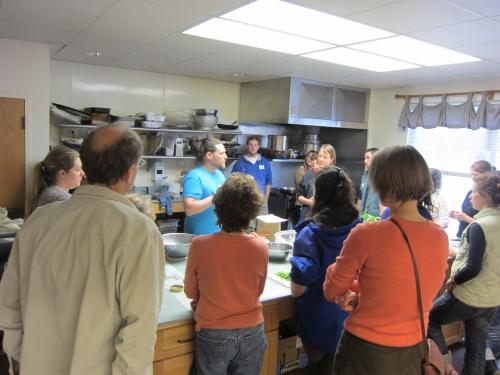DIY Lacto-Fermented Veggies and Fruits
The beginning of the summer is the perfect time to learn how to lacto-ferment fruit and veggies. City Market has been teaching these classes for a number of years, and this growing season we are alternating veggies and fruits every other month May through September. Got spring garlic? Stuff it in a jar with sea salt and water and watch the magic happen! You'll have a great salad or stir fry ingredient that just gets better with time!
Spring garlic chopped and ready to tamp down with sea salt and water for lacto-fermented garlic
In years past, we taught special topics in fermentation, like mixed vegetables, sauerkraut, kimchi, salsas, chutneys, and more. However, the underlying principle of fermentation is the same, so we figured that if we taught the basics, people can adapt it to whatever type of vegetables or fruits they have on hand.
Vegetables and fruits ARE a little bit different when it comes to fermentation – the former are most often mixed with sea salt, while the latter – at least to make fruity and fizzy beverages, the way we like them – are mixed with a soda culture like ginger bug or whey. Either way, the naturally occurring lactobacilli in the vegetables and fruits consume the starches and sugars, creating lactic acid, which acts as a natural preservative. In the case of vegetables, that means tart and tangy ginger carrots, dilly beans, sweet peppers, and more. In the case of fruits, we love the taste of fizzy fruit sodas made from strawberries, blueberries, raspberries, and in the fall, apples. We’ve also been having fun with a fruit and veggie combinations, like raspberry-beet!
So come on out and join us at one of our fermentation classes this summer. They run on the second Mondays of each month in the McClure Multi-Generational Center, taught by myself and FolkFoods owner Jason Frishman.

